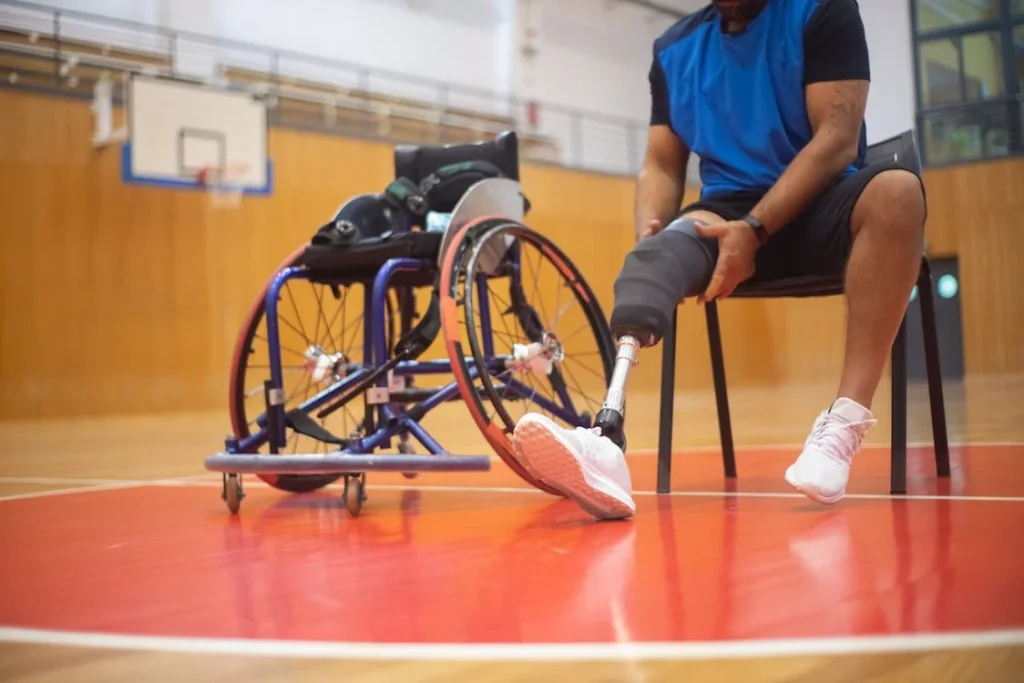Losing part of a foot can change the way you walk, stand, and go about daily life. A partial foot prosthetic helps restore balance, protect sensitive areas, and improve movement. But not all prosthetics are the same. Choosing the right material is just as important as the prosthetic itself.
Two of the most popular materials used for partial foot prosthetics are carbon fiber and silicone. Each has its own strengths and limitations, and the right choice depends on factors like lifestyle, comfort, and durability.
Carbon fiber prosthetics are known for being strong and lightweight, making them a great option for active individuals. On the other hand, silicone prosthetics are flexible and comfortable, offering a natural look and feel.
But which one is better for you?
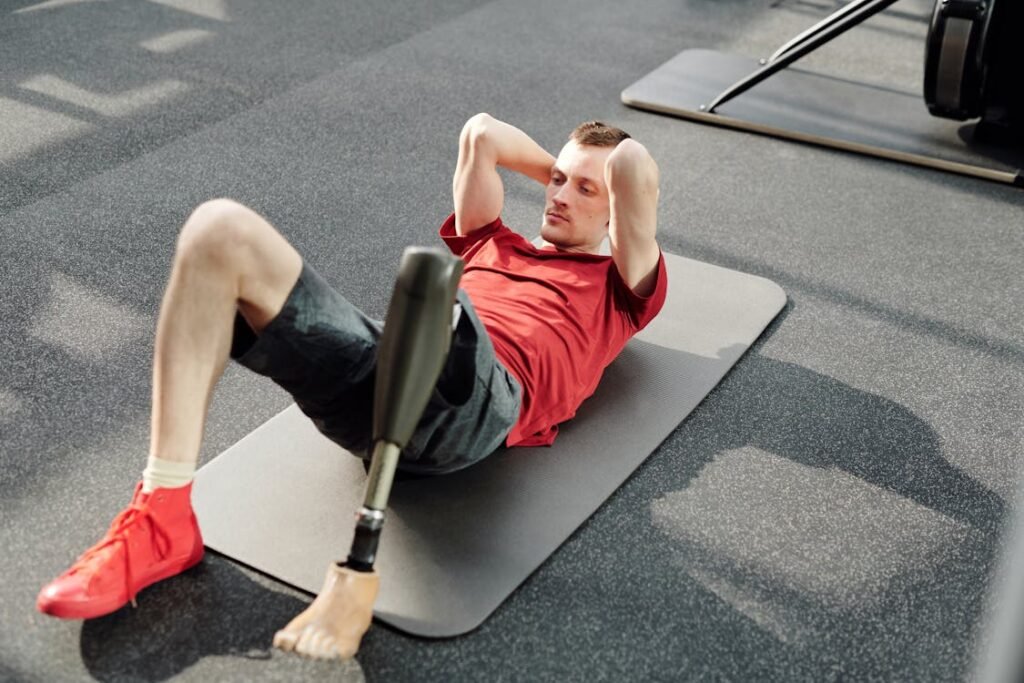
Understanding Carbon Fiber Partial Foot Prosthetics
Carbon fiber is widely used in high-performance prosthetics because of its strength and lightweight properties. It is a composite material made by weaving thin strands of carbon together and binding them with resin.
The result is an incredibly durable structure that provides excellent support without adding unnecessary weight.
Strength and Durability
One of the biggest advantages of carbon fiber prosthetics is their durability. They are designed to handle high levels of stress, making them ideal for individuals who engage in physical activities such as running, hiking, or sports.
The material does not break down easily under repeated impact, which means it lasts longer than many other prosthetic materials.
Since carbon fiber is resistant to moisture and environmental conditions, it does not degrade easily when exposed to sweat, humidity, or dirt. This makes it a reliable choice for those who need a prosthetic that can keep up with an active lifestyle.
Lightweight and Energy Return
Carbon fiber is much lighter than traditional prosthetic materials like plastic or metal. This reduced weight means less strain on the remaining part of the foot and the overall body.
A lighter prosthetic allows for smoother movement, making it easier to walk naturally without overcompensating with the other foot.
Another important feature of carbon fiber is its ability to store and release energy. When you step down, the material absorbs energy and then returns it when you push off the ground.
This energy return effect helps reduce fatigue and improves walking efficiency, making movement feel more natural.
Comfort and Fit
While carbon fiber is strong and lightweight, comfort depends largely on how well the prosthetic is designed and fitted. Since it is a rigid material, it does not conform to the shape of the foot like softer materials. This can lead to pressure points if the prosthetic is not properly customized.
To ensure maximum comfort, most carbon fiber partial foot prosthetics are combined with soft liners or padding. These liners help distribute pressure evenly and prevent irritation. A good fit is essential, as any gaps or misalignment can cause discomfort during prolonged use.
Functionality and Use in Daily Life
Carbon fiber prosthetics are ideal for people who need a high-performance solution. They provide excellent stability and support, making them suitable for various activities, from walking to sports. Since the material is rigid, it offers good control, allowing users to maintain balance and movement with ease.
However, the stiffness of carbon fiber can make it less suitable for individuals who prioritize comfort over performance. Those who spend long hours standing or need a prosthetic that mimics the soft feel of natural skin may find it less appealing.
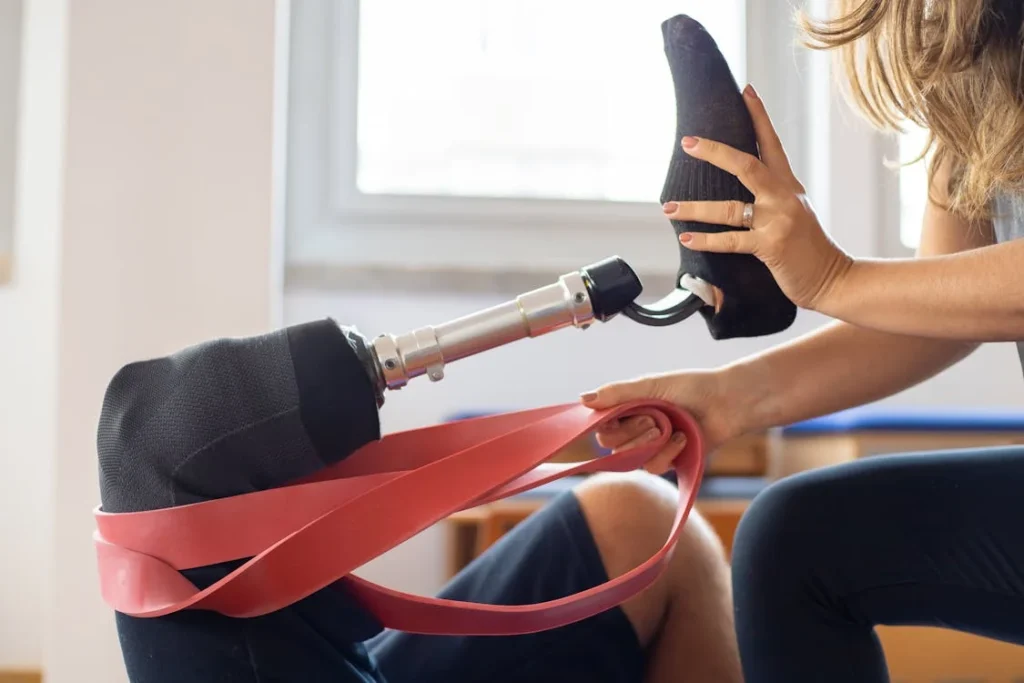
Understanding Silicone Partial Foot Prosthetics
Silicone is a popular material for partial foot prosthetics because of its softness, flexibility, and lifelike appearance. Unlike rigid materials like carbon fiber, silicone offers a more natural feel, making it a preferred choice for individuals who prioritize comfort over high-performance functionality.
Softness and Comfort
One of the biggest advantages of silicone prosthetics is their comfort. The material is soft and flexible, which allows it to conform closely to the shape of the remaining foot. This reduces pressure points and helps prevent discomfort, even when wearing the prosthetic for long hours.
Silicone also provides a cushioning effect, absorbing impact when walking or standing. This makes it an excellent choice for people who experience sensitivity in their residual limb or those who need a prosthetic that feels as close to natural skin as possible.
Since silicone prosthetics are designed to be worn directly against the skin, they are often custom-molded for a precise fit. This close fit ensures stability and reduces the risk of friction, which can lead to irritation or blisters.
Realistic Appearance
For many users, the appearance of a prosthetic plays an important role in their confidence and overall satisfaction. Silicone prosthetics can be designed to closely match the natural color and texture of the skin, making them visually appealing.
High-quality silicone prosthetics often include details like veins, skin tone variations, and even toenails to create a natural look. This makes them a great option for individuals who prefer a prosthetic that blends seamlessly with their body.
Since silicone is flexible, it also allows for more natural movement in the foot. Some designs even include special reinforcements that help mimic the way a natural foot bends when walking.
Durability and Maintenance
While silicone prosthetics are comfortable and realistic, they are not as durable as carbon fiber. Over time, the material can wear down, especially in areas that experience repeated stress. Walking on rough surfaces or using the prosthetic for intense activities can cause it to degrade faster.
Silicone is also more susceptible to damage from sharp objects. If the prosthetic comes into contact with rough or pointed surfaces, it may develop tears or punctures. To maintain its longevity, users need to handle it with care and avoid excessive strain.
Cleaning and maintenance are relatively simple, as silicone can be washed with mild soap and water. However, regular inspections are necessary to ensure there are no signs of wear or damage.
Functionality and Use in Daily Life
Silicone prosthetics are best suited for individuals who prioritize comfort and aesthetics in their daily routine. They work well for casual walking, standing, and light activities, but they may not provide the same level of energy return or support as carbon fiber options.
For those who spend long hours on their feet or need a prosthetic that offers flexibility in movement, silicone is an excellent choice. It allows for a more natural walking pattern and reduces pressure on the remaining foot.

Comparing Carbon Fiber and Silicone Partial Foot Prosthetics
Now that we’ve explored the individual characteristics of carbon fiber and silicone prosthetics, it’s time to compare them directly. Choosing the right material depends on several factors, including mobility needs, comfort preferences, and daily activities.
Comfort and Fit
Silicone prosthetics excel in comfort. The material molds to the foot, providing a soft and natural feel. This makes it a great option for individuals who experience sensitivity or need extra cushioning. Since silicone conforms to the skin, it minimizes pressure points and reduces irritation, even when worn for extended periods.
Carbon fiber, on the other hand, is rigid and does not adapt to the shape of the foot. While it offers excellent support, it may create pressure points if not properly fitted. However, when combined with soft liners, a carbon fiber prosthetic can still provide a comfortable experience.
For individuals who prioritize a natural, skin-like feel, silicone is the better choice. Those who prefer a structured and supportive fit may find carbon fiber more beneficial.
Durability and Longevity
When it comes to durability, carbon fiber has a clear advantage. It is one of the strongest materials used in prosthetics and can withstand heavy use without breaking down. Athletes and highly active individuals benefit from carbon fiber’s ability to handle repeated impact and stress.
Silicone, while flexible and comfortable, is not as durable. Over time, it can wear out, especially in high-pressure areas. It is also more susceptible to cuts and punctures from sharp surfaces. Users need to take extra care to prevent damage, and replacements may be required more frequently than with carbon fiber prosthetics.
Performance and Mobility
Carbon fiber prosthetics are ideal for those who require high mobility and energy efficiency. The material’s ability to store and release energy makes walking, running, and other activities more efficient. Since carbon fiber is lightweight, it reduces strain on the remaining foot, making movement easier.
Silicone, while providing flexibility, does not offer the same level of energy return. It works well for casual walking and standing but may not be the best option for individuals who engage in high-impact activities. The softness of silicone can also make it feel less stable compared to the firm structure of carbon fiber.
If performance and mobility are a priority, carbon fiber is the better choice. If comfort and ease of use are more important, silicone may be the preferred option.
Aesthetic Appeal
For those who want a prosthetic that looks as natural as possible, silicone is the superior option. Its lifelike appearance, ability to match skin tone, and soft texture make it almost indistinguishable from a natural foot. This can be especially important for individuals who wear open-toed shoes or prefer a prosthetic that blends seamlessly with their body.
Carbon fiber, while sleek and modern in design, does not provide the same level of realism. It is primarily chosen for functionality rather than aesthetics. If appearance is a key factor in decision-making, silicone offers a more natural look.
Cost Considerations
The cost of a prosthetic varies based on customization, materials, and additional features. Carbon fiber prosthetics tend to be more expensive due to their advanced design and durability. However, because they last longer, they may be a cost-effective investment in the long run.
Silicone prosthetics, while often more affordable upfront, may require more frequent replacements due to wear and tear. Depending on the individual’s activity level, this could lead to higher long-term costs.

Choosing the Right Prosthetic for Your Lifestyle
The decision between carbon fiber and silicone partial foot prosthetics ultimately depends on lifestyle, daily activities, and personal preferences. Each material has unique strengths, and understanding how they fit into different aspects of life can help in making the best choice.
For Active Individuals and Athletes
If physical activity is a major part of your life, a carbon fiber prosthetic is likely the better option. The high-strength material provides stability, allowing for greater confidence in movement. Whether engaging in sports, running, or hiking, the energy return of carbon fiber helps reduce fatigue and improves overall mobility.
Since carbon fiber prosthetics are designed for durability, they can withstand rigorous use without breaking down. This makes them ideal for those who lead an active lifestyle and need a prosthetic that keeps up with their daily movements.
For Individuals Prioritizing Comfort
If comfort is the main priority, silicone prosthetics offer a more natural feel. The soft, flexible material adapts to the shape of the foot, preventing pressure points and irritation. This is particularly beneficial for individuals who spend long hours on their feet or experience sensitivity in the residual limb.
For those who value ease of wear and a prosthetic that closely mimics the feel of natural skin, silicone is an excellent choice. It allows for smoother weight distribution and can help with balance during regular walking and standing.
For Those Who Need a Natural Appearance
Individuals who are concerned about the look of their prosthetic may find that silicone provides the most realistic appearance. The ability to match skin tone and texture gives it a lifelike quality that is difficult to achieve with other materials.
For people who wear open footwear or prefer a prosthetic that blends seamlessly with their natural foot, silicone is the preferred option. It allows for greater confidence in social settings and helps users feel more at ease with their prosthetic.
For Long-Term Use and Durability
If longevity is an important factor, carbon fiber is the better investment. Its ability to withstand high-impact activities and resist environmental factors makes it a long-lasting choice. Though it may require a higher initial cost, its durability ensures that replacements are needed less frequently.
Silicone prosthetics, while comfortable, are more prone to wear and tear. They require careful handling to prevent damage, and depending on usage, they may need to be replaced sooner than carbon fiber alternatives.
Making the Final Decision
Choosing between carbon fiber and silicone depends on personal needs and lifestyle. Those who need a high-performance, durable prosthetic for active use will benefit more from carbon fiber. Those who prioritize comfort, aesthetics, and flexibility in everyday life may find silicone to be the better choice.
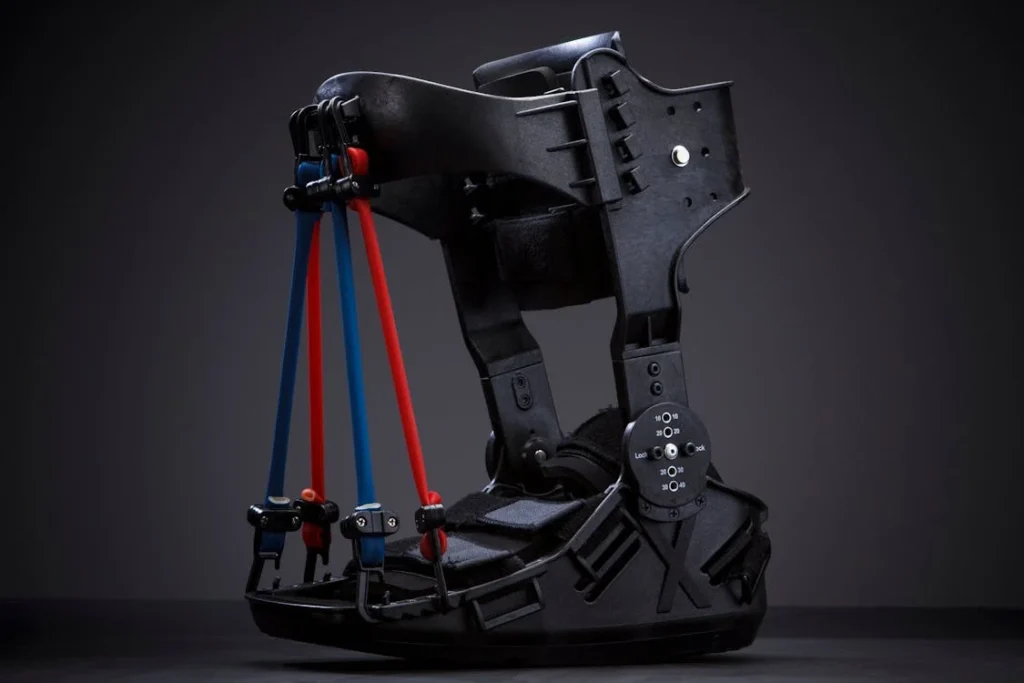
The Role of Customization in Partial Foot Prosthetics
Beyond material choice, the level of customization plays a critical role in how well a prosthetic functions. Both carbon fiber and silicone prosthetics can be tailored to meet individual needs, but the customization process differs significantly based on the material and the user’s requirements.
Custom Fit and Socket Design
A well-fitted prosthetic is essential for comfort, stability, and efficiency. Since every residual limb is unique, prosthetists take detailed measurements to ensure a proper fit.
Carbon fiber prosthetics require precise shaping to ensure they provide adequate support without creating pressure points. These prosthetics are often designed with rigid sockets that help distribute weight evenly. Some models include soft liners or foam padding to improve comfort and reduce friction between the socket and the skin.
Silicone prosthetics, on the other hand, are typically molded directly to the shape of the residual limb. This allows them to create a snug and natural fit. Because silicone is flexible, it adapts more easily to small changes in the foot’s shape over time, reducing the need for frequent adjustments.
Adjusting for Activity Levels
Customization is especially important for individuals with varying activity levels. Those who need a prosthetic for high-impact activities may require reinforcements in key areas to provide additional durability.
Carbon fiber prosthetics can be engineered with reinforced layers to improve shock absorption, while silicone prosthetics can be designed with specialized cushioning to enhance comfort during prolonged use.
Some prosthetic users require multiple devices tailored for different activities. For example, an individual may have a high-performance carbon fiber prosthetic for running or sports and a softer silicone prosthetic for everyday walking. This dual approach allows for greater versatility and ensures that each prosthetic meets a specific need.
Integration with Footwear
Footwear compatibility is another factor that influences customization. Carbon fiber prosthetics are often designed to fit inside shoes, and some models even include built-in footplates to provide additional support.
However, due to the rigidity of carbon fiber, they may not always conform well to all types of shoes.
Silicone prosthetics, being more flexible, offer a better fit for a wider range of footwear. They can be shaped to match the contours of the foot, allowing users to wear sandals, open-toed shoes, or even go barefoot in certain cases.
For individuals who prioritize aesthetics, silicone prosthetics provide more freedom in footwear choices.
The Impact of Skin Sensitivity
Since prosthetics are worn for extended periods, skin sensitivity is an important consideration. Some users experience irritation or discomfort due to prolonged contact with rigid materials. Carbon fiber prosthetics often require soft liners or specialized padding to prevent skin irritation.
Silicone, being naturally soft and skin-friendly, minimizes the risk of friction-related issues. However, some individuals may have allergies or sensitivities to certain types of silicone, making it necessary to test different formulations before finalizing a prosthetic.
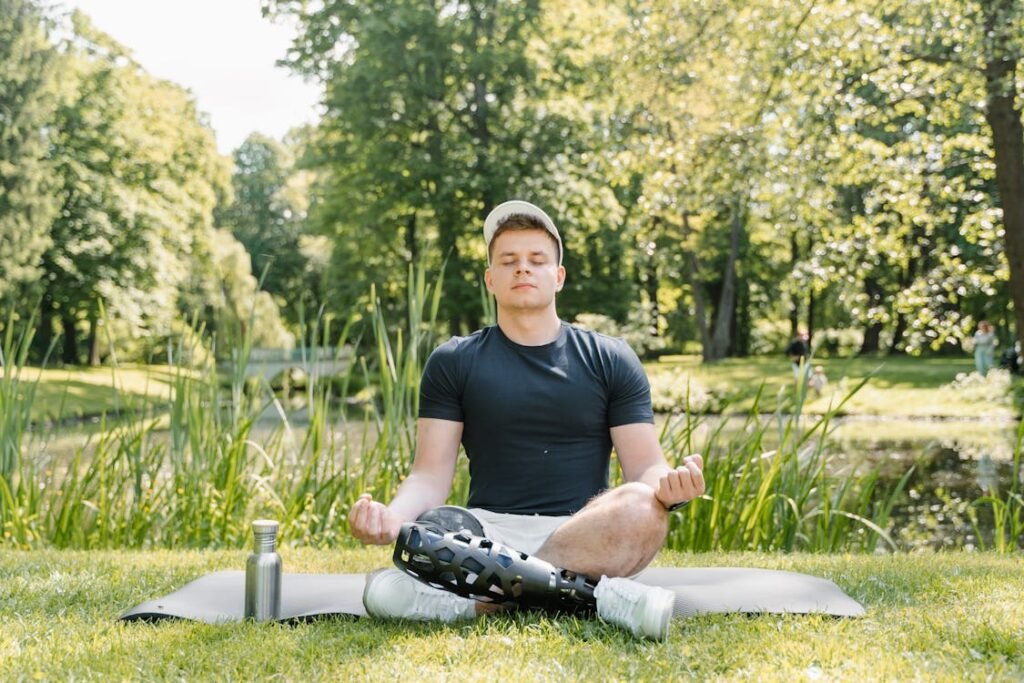
The Psychological and Emotional Impact of Choosing the Right Prosthetic
Adjusting to a partial foot prosthetic is not just about physical adaptation—it also involves emotional and psychological adjustments. The type of prosthetic a person chooses can have a significant impact on confidence, self-perception, and overall well-being.
Restoring a Sense of Normalcy
After a partial foot amputation, many individuals experience a period of emotional adjustment as they navigate their new reality. A well-fitted and functional prosthetic helps restore independence, allowing users to return to daily routines with confidence.
For some, the ability to move efficiently with a high-performance carbon fiber prosthetic provides a sense of empowerment. Being able to walk, exercise, or engage in physical activities without limitation helps rebuild self-assurance.
Others may find that a lifelike silicone prosthetic gives them the confidence to wear open-toed shoes or go barefoot without feeling self-conscious.
Both materials offer different advantages, but the ultimate goal is the same—to help users feel comfortable in their bodies and maintain an active lifestyle without limitations.
Overcoming Social and Emotional Challenges
Many people with limb loss face emotional hurdles related to how others perceive them. Some individuals may feel self-conscious about their prosthetic, especially in social situations or public settings.
Silicone prosthetics are often preferred by those who want a natural-looking solution that blends seamlessly with their body. This can be particularly important for individuals who work in professional environments or social settings where appearance plays a role in confidence.
The realistic design of silicone prosthetics allows users to move through the world without drawing unwanted attention.
On the other hand, some individuals embrace their prosthetic as a part of their identity. The sleek, modern look of a carbon fiber prosthetic can be seen as a symbol of strength and resilience.
Many athletes and active individuals take pride in the high-tech aesthetic of carbon fiber, viewing it as a tool that enhances their capabilities rather than something to hide.
Coping with Body Image Changes
The way a person views their own body after an amputation plays a major role in emotional well-being. Choosing the right prosthetic can help with body image concerns and provide reassurance that life can continue as before, even with some adjustments.
It’s important to remember that adaptation takes time. Some people quickly embrace their prosthetic and move forward with confidence, while others need more time to adjust.
Psychological support, peer mentorship, and speaking with other prosthetic users can help ease the transition.
The Role of Personal Choice
Ultimately, the decision between carbon fiber and silicone prosthetics should be based on what makes the user feel most comfortable, both physically and emotionally. The right prosthetic is one that aligns with the individual’s goals, lifestyle, and personal preferences.
Conclusion
Choosing between carbon fiber and silicone partial foot prosthetics comes down to personal needs, lifestyle, and comfort. Carbon fiber offers strength, durability, and high-performance mobility, making it ideal for active individuals who need energy return and long-term resilience. Silicone, on the other hand, provides superior comfort, flexibility, and a natural appearance, making it a great choice for those who prioritize aesthetics and ease of wear.
Both materials have their advantages, and the right choice depends on how the prosthetic will be used daily. For some, a combination of both—such as a carbon fiber prosthetic with a silicone liner—provides the best of both worlds. Customization plays a key role in ensuring a proper fit and function, so working closely with a prosthetist is essential.
At Robobionics, we understand that every individual has unique needs. Whether you need a high-performance solution or a prosthetic that blends seamlessly with your lifestyle, we are here to help. Contact us today to explore the best partial foot prosthetic options tailored just for you.



